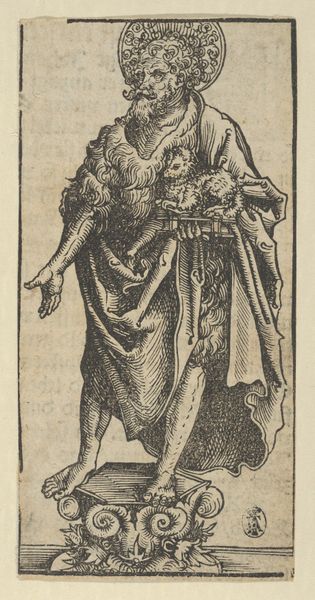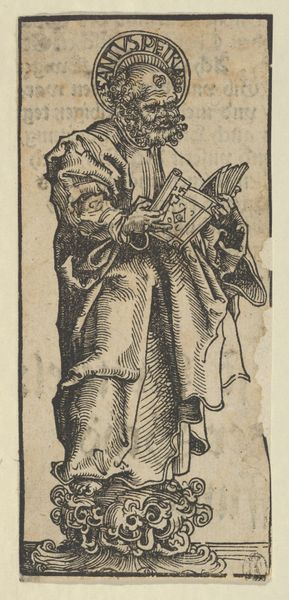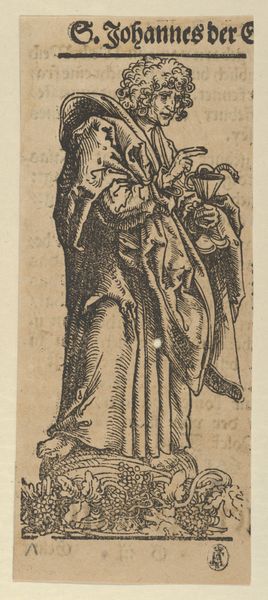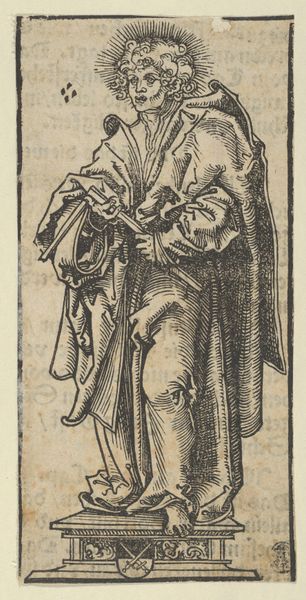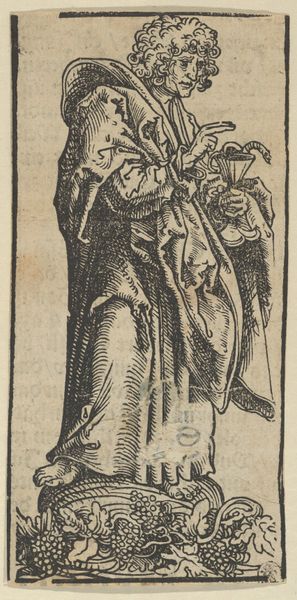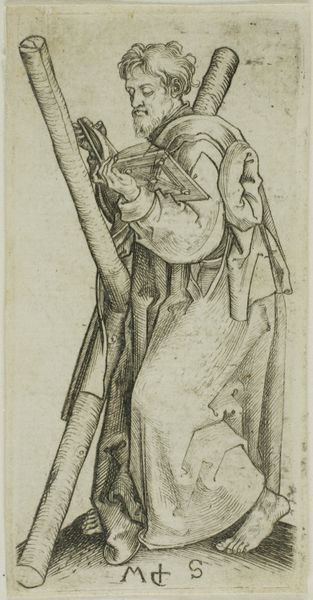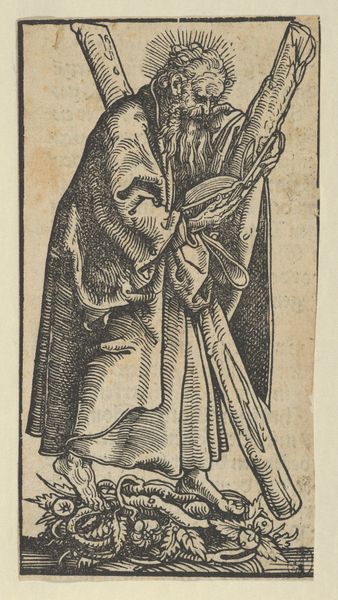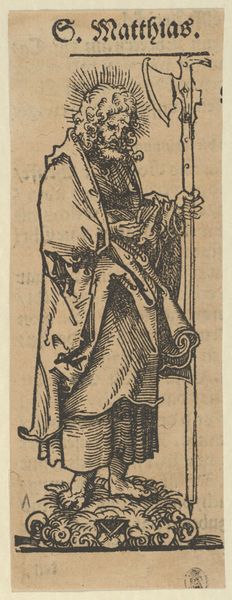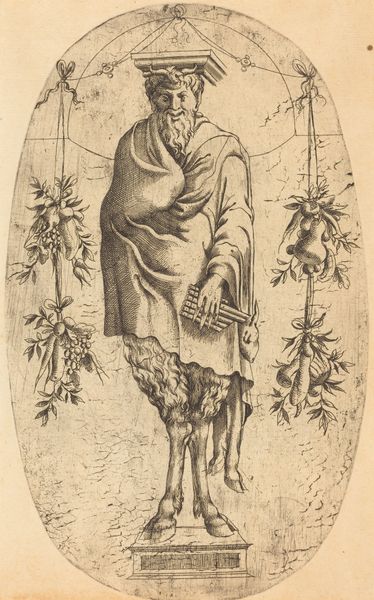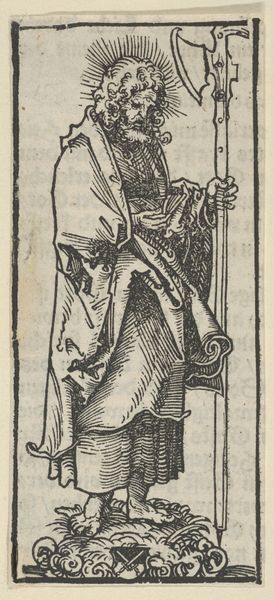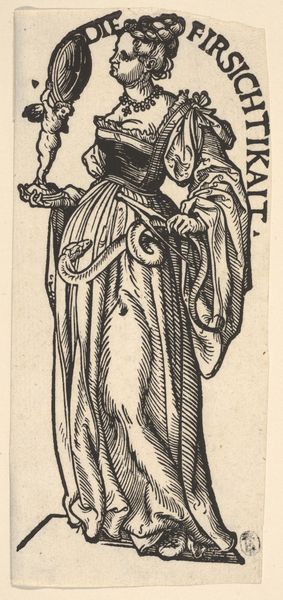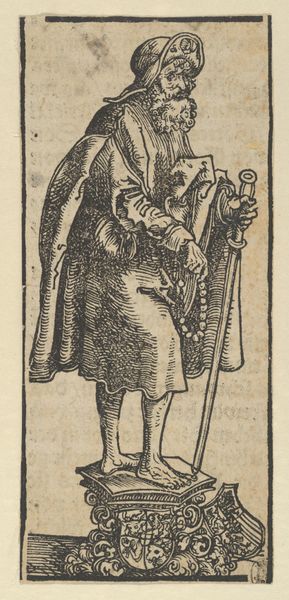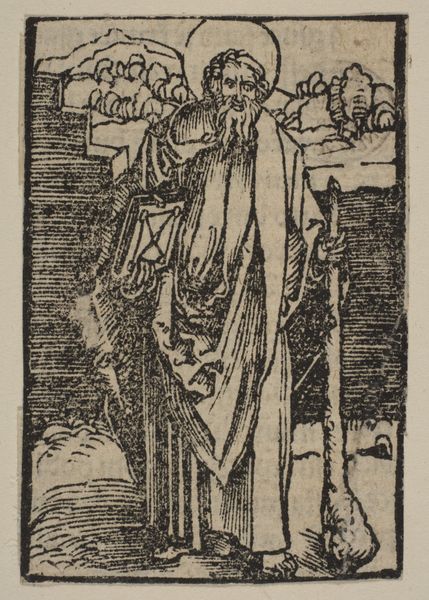
Silver Statuette of St. Bartholomew from the Wittenberg Reliquaries 1472 - 1553
0:00
0:00
drawing, print, woodcut
#
drawing
# print
#
figuration
#
woodcut
#
northern-renaissance
Dimensions: Sheet: 5 1/8 × 2 3/8 in. (13 × 6 cm)
Copyright: Public Domain
Editor: Here we have Lucas Cranach the Elder's woodcut, "Silver Statuette of St. Bartholomew from the Wittenberg Reliquaries", created between 1472 and 1553. I'm immediately struck by the detail achieved in a print. How do you approach analysing something like this? Curator: Indeed, it is a tour de force of graphic skill. My focus begins with the intrinsic elements. Observe the pronounced linearity; each stroke carefully delineates form, creating a visual tension. Note the composition – a central, static figure balanced by dynamic lines and textures, but also the interplay between light and shadow crafted entirely by hatching. Editor: I see that now! The robes are quite voluminous with many linear textures. What is your perspective on the significance of those textural differences? Curator: Consider the manipulation of positive and negative space, a common element of prints. It influences the viewer's perception of depth. Also, analyse the formal placement of St. Bartholomew: set upon a decorated plinth with rich surface embellishments and holding a book in his left hand and a flaying knife hanging from the book in the other, both signifying his erudition and manner of martyrdom. Consider also, that the knife alludes directly to St. Bartholomew's body being a textural subject onto itself: he was, supposedly, flayed alive. Editor: It's fascinating to think about the graphic forms imitating a kind of brutal corporeality. Curator: Precisely! And from a purely structural point, reflect on how all of the figures lead your eyes upward from base to halo, from shadow to light. What initially struck you when we started our conversation, relative to now? Editor: Initially, I was impressed with the pure image, but now the intentional graphic language adds a new appreciation of the medium’s potential for complex figuration. Curator: My experience exactly. I always notice the intrinsic components first, letting cultural background knowledge supplement the original visual.
Comments
No comments
Be the first to comment and join the conversation on the ultimate creative platform.
